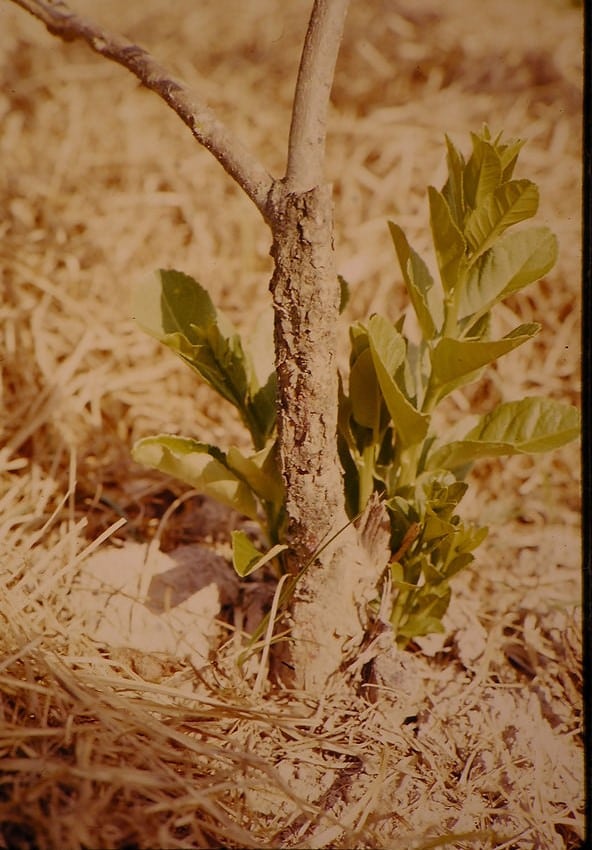What Causes Citrus Foot Rot: Controlling Citrus Gummosis In Gardens


Citrus foot rot, often known as gummosis of citrus or brown rot of citrus trees, is a major disease that wreaks havoc on citrus trees around the world. Unfortunately, citrus foot rot isn’t curable but you may be able to prevent it from taking over your citrus orchards. Read on to learn more about citrus gummosis problems and what you can do to prevent the disease from spreading.
Citrus Gummosis Information
What causes citrus foot rot? Citrus foot rot is a disease caused by Phytophthora, an aggressive fungus that lives in the soil. Phytophthora requires moisture to move to trees via rain, irrigation, or whenever spores splash on tree trunks. Trees can develop citrus root rot symptoms very quickly in rainy weather and cool, moist climates.
Citrus Foot Rot Symptoms
Citrus foot rot symptoms include yellowing foliage and leaf dieback, along with reduced yield and smaller fruit. The term “gummosis” isn’t the name of a disease, but actually refers to a major symptom in which a gooey, dark brown, gum-like substance oozes from cracks and lesions in the bark. The water soaked, brownish or black lesions spread around the trunk, eventually girdling the tree. This may occur rapidly, or it may continue for several years, depending on environmental conditions.
Managing Citrus Gummosis Problems
Early detection of citrus foot rot is critical, but the initial signs may be difficult to spot. Here are some tips for managing gummosis of citrus: Ensure the soil drains well. You may need to consider planting trees on berms to improve drainage. Look closely at the bark of new trees before purchasing. Inspect citrus trees for symptoms several times per year. Water citrus trees properly, using a drip system to avoid overwatering. Avoid irrigating trees with drained water, as Phytophthora can be moved from one area to another in soil runoff. Limit mulching under citrus trees. Mulch slows drying of the soil, thus contributing to excess moisture and the development of citrus foot rot.
Gardening tips, videos, info and more delivered right to your inbox!
Sign up for the Gardening Know How newsletter today and receive a free copy of our e-book "How to Grow Delicious Tomatoes".

A Credentialed Garden Writer, Mary H. Dyer was with Gardening Know How in the very beginning, publishing articles as early as 2007.
-
 My Homemade Orchid Fertilizer Always Brings More Blooms – Here's The Easy Recipe That Transforms Plants
My Homemade Orchid Fertilizer Always Brings More Blooms – Here's The Easy Recipe That Transforms PlantsScientist-turned-gardener Mary Ellen Ellis shares her tried-and-tested DIY orchid fertilizer recipe, plus more ingredients to try for healthy, happy plants.
By Mary Ellen Ellis
-
 Looking For Plants To Give You The Soft And Fuzzies? Try These 5 Fuzzy Leaf Plant Options
Looking For Plants To Give You The Soft And Fuzzies? Try These 5 Fuzzy Leaf Plant OptionsLovers of texture, drama, silver foliage and tactile plants will adore these special sensory garden additions. These fuzzy leaf plant options will leave you all aglow
By Susan Albert